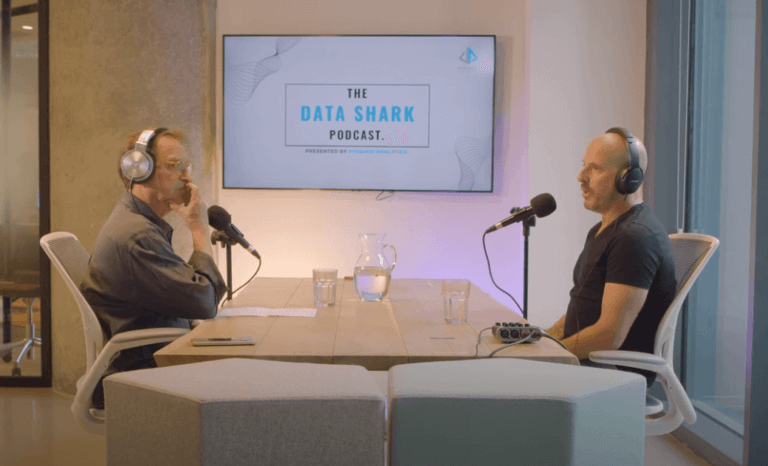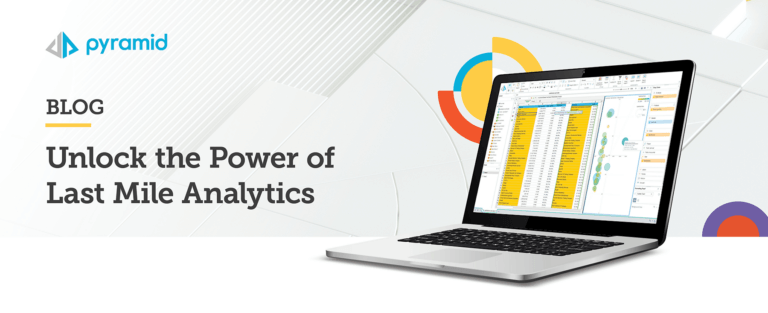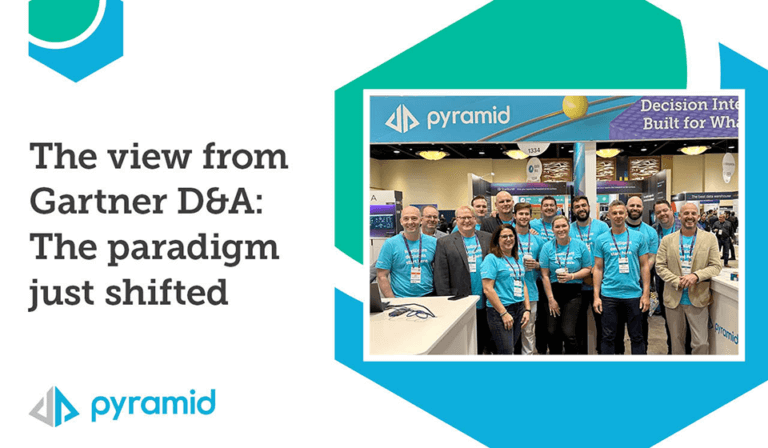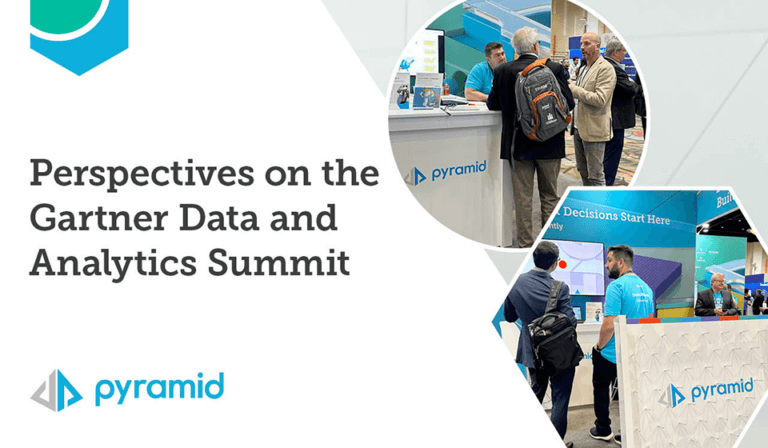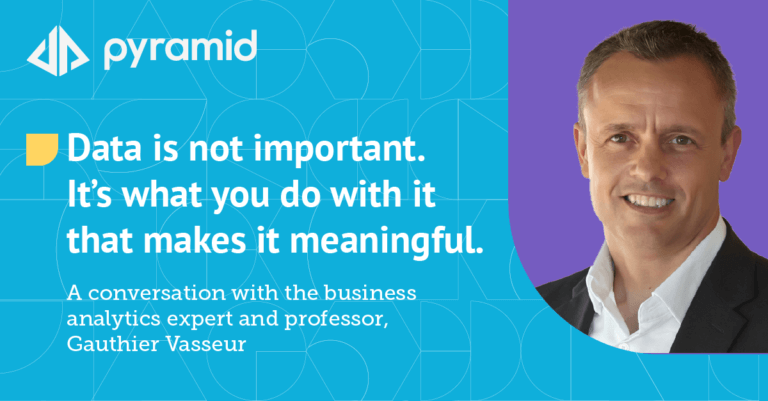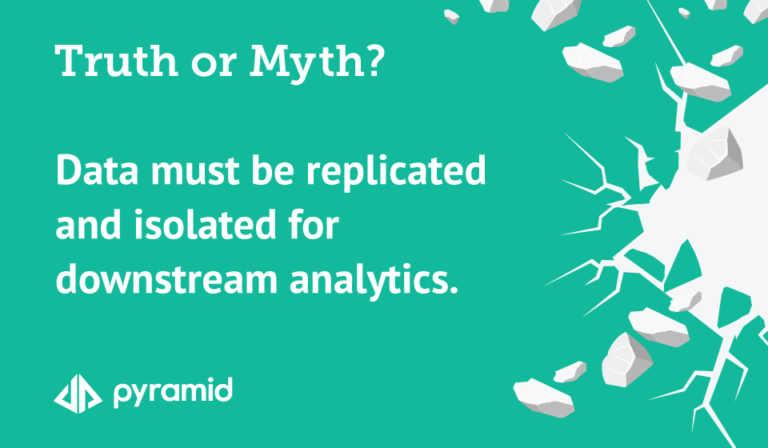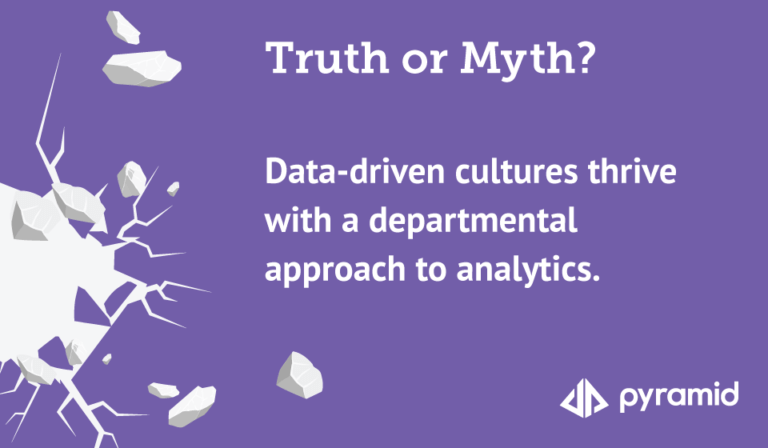Today’s most successful companies are driven by data. But for some companies, most of the labor associated with data analytics isn’t delivering real business value.
“Just because companies develop analytic content, there is an assumption that people will pick it up and make use of it—and that’s a bad assumption,” says Rob Cowell, Principal Technologist at Pyramid Analytics. “We still see this process going on in a lot of organizations.”
On February 25, 2021, Rob was joined by a dozen analytics leaders across geographies and industries for an international roundtable—the GB Intelligence Digital Boardroom. Here are some of the perspectives they shared during the session, which focused on developing culture, trust, leadership, and communication in modern enterprise analytics.
How Can Analytics Culture Drive Business Value?
IT and BI teams often focus on collecting as much data as possible, especially when unrestricted by costs. “But the critical thing for the business [when collecting data] is, what is the question you want to answer?” said a senior mobility and web analytics leader at a global industrial manufacturer.
Indeed, one of the biggest challenges highlighted during the session was preparing and encouraging business users not only to understand and use analytics tools but also to realize their potential in the first place. “The point isn’t talking about technology or data, but strategy and culture at a human level,” said one head of data analytics strategy at a multinational consumer brand.
“When you look at ‘analytics culture’ for a company that is over 100 years old, that has grown organically across the world, we suffer from the challenge of any conglomerate with different levels of maturity, different mindsets,” said the head of data analytics strategy. Nonetheless, the company’s employees can more easily align with cultural changes rather than technological ones, he observed—even with varying levels of familiarity with analytics.
Cowell highlighted several elements that can contribute to a stronger analytics culture. These include consulting engagements between IT or BI and business end users; training and coaching; and enabling self-sufficiency, whereby users analyze their own data rather than making IT or BI responsible for “delivering analysis.” The key is making this process simple for end users.
Building Trust in Analytics and Its Users
Part of the challenge for these companies is a lack of common analytics language and frameworks that would enable users to collaborate. “The struggle now is more to get people into working with data—the willingness to interpret data, to read data, to deal with data, and to communicate the benefits,” said another analytics leader.
In this way, technology is not the concern—a lack of the right culture and trust are preventing decision-makers at all levels from making progress. “Our biggest challenge is to persuade people, to show them how they can leverage analytics,” one chief data scientist from an aeronautics company described. “You need to be precise in our industry, so it’s difficult to generate trust.”
As Rob observed, successful analytics is built on trust. It’s about giving users confidence that the data they are accessing is correct, up to date, and accessible. That way, they can leverage it to have conversations about shared insights and support decisions that will resonate with other team members.
“You have to understand the language that your [employees are] using, because as soon as you start the conversation you build up trust, and then you come to the point where people start trusting data,” said the web analytics and mobility leader. “Otherwise, you come to a meeting where … no one is trusting each other. This is the situation we want to avoid.”
Analytics Culture Is About Asking the Right Questions
Rob emphasized the importance of a people-focused analytics strategy, rather than concentrating on technology alone. That means helping users develop the skills they need to ask probing questions, realize value from analytics, and develop a supportive analytics culture.
“Try to educate people that they have to sync on the end-to-end story,” suggested the mobility and web analytics leader. “What is the end-to-end question you want to ask?”
Indeed, too often users end up asking questions only after they’ve collected and attempted to analyze the data. “Understanding what you are trying to achieve or the question you want to answer is critical,” one chief information and security officer at an international technology brand observed. “It’s easy to rush into the data collection process without understanding what to do with that, and then you try to shape the question based on the data you have available.”
“It will not help if IT is the ‘owner’ of the data,” added the mobility and web analytics leader. “To be successful in data analytics, users need to understand it’s their data, and we must provide tools that help them.”
Analytics Autonomy Starts With Executive Support
The group agreed that analytics strategy must focus on building employee trust in analytics, as well as empowering them with the skills and language they need to realize its true value. “At the end of the day, it comes down to simple relationship building and expertise, almost inspiring people to understand the value of what they are doing,” said the head of data analytics strategy.
Companies can enable self-sufficiency, even while maintaining governance. “We are moving to an area where we will create a federated approach,” said the head of data analytics strategy. “This is the direction in which we are moving—encourage people to retain autonomy, but with responsibility.”
In terms of first steps, the group also agreed that driving this change must begin at the executive level. “If you can’t make it valuable there, you need to rethink the process,” said the chief information and security officer.
Pyramid Analytics is purpose-built for companies ready to embrace a culture that values and uses analytics for ongoing business success. Contact us to learn more about how a centralized solution can help you and your employees take on the challenges of the day, every day.





